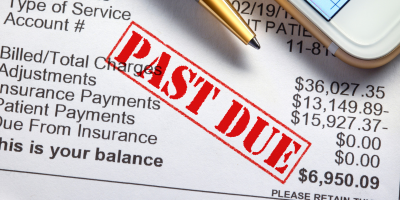It’s still the month of January, but I’m certain that the first-week craze of trying to purge and get organized is starting to fall by the wayside for many. Perhaps you fall into that category?
I know that the first week, I went through and eliminated an ENTIRE BOX of stuff each and every day. Some of it we were able to sell (and put toward our goals), but most of it was hauled off to a donation site. I can’t begin to tell you how freeing it is to see less clutter around our home and in our closets.
5 Steps to Be More Organized This Year
Organization goes way beyond a week in January (or whatever month of the year) spent purging, so I thought I’d talk a little bit about how you can implement my favorite organizational techniques and make them a habit year-round.
Tip: Grab my FREE Weekly Household Task Checklist to keep your home tidy and clutter free year-round!
Step 1: Create a Family Calendar (And Actually Use It)
The biggest struggle I hear about with most families is how to keep track of all of the appointments, activities, and commitments we fill our days and weeks with. Trust me, I know – in fact, if we aren’t careful, we end up scheduling over our daughters’ Christmas concert without even knowing it.
If you are a parent and a spouse at the same time, you know exactly what I’m talking about.
There are a couple of ways you can set up a family calendar, so let’s talk about what those are.
Physical Calendar
I’m a huge fan of a physical calendar if only so my kids can see what’s coming up in the near future. We use whiteboard calendars and have them in both a monthly calendar format and weekly formats as well.
The monthly calendar is normally updated on the first day of each month and typically includes birthdays, anniversaries and other events that will affect the entire family.
We have one weekly calendar for each of our girls and they place their own activities on them so that they can remember which days to take their books back to the library, put on their tennis shoes for P.E., or remember to work ahead on their homework because of upcoming evening or weekend commitments.
In addition to the whiteboard calendars, I keep a planner that I could not live without. (My favorite is this one.) I input all of my commitments over the course of the year, keep up with that to-do list, and track the time I spend on tasks, including blogging, homeschool, and exercise. I’ve used a physical planner for years and even with access to online calendar systems for family and blogging, I just don’t function without the paper version.
Calendar App
The problem with a physical calendar is that it’s hard to update when you are on the go, or if you have several people’s schedules to keep track of. So, despite my attachment to my physical planner, we also utilize a shared calendar app to keep track of appointments that affect the entire family.
Personally, we use the iCal app that comes with our iPhones, but a couple of other options you might consider are the Google Calendar App or FamCal. Although I haven’t personally used either option, they come highly recommended by a couple of friends of mine and both get high ratings in the app store.
The best part of having a family calendar at your fingertips is that you can add any appointments to the calendar at any time from anywhere. This has been really helpful for us because if Justin happens to be at the dentist (or anywhere else) with one of the kids and needs to schedule a follow up appointment, he can look at the calendar and see what other conflicts he or I might have that day and determine if it will work or not.
When we’ve had other people living with us, we’ve linked them to our calendars as well so that they know when we are available to take them to appointments and such. It cuts down on the stress of having to reschedule appointments due to overscheduling and also prevents me from forgetting an appointment because the app reminds me.
Honestly, having a family calendar has been a total win in my book.
Step 2: Have a Monthly Donation Box
If you took a look in the trunk of my car and you didn’t know better, you’d think we were always in the process of moving. The truth is that I find it so much easier to offload stuff to the donation center if it just goes straight out of the house and into the car. In fact, we now keep a box (or bag) in the back of the car at all times and when something needs to be donated, someone runs it out there immediately.
Besides the ability to constantly be clutter free, having a box of items already in the car means that I don’t have to consider where they are or if I have them all when I get the chance to drive by the donation center. I can pull in and offload without wondering if I’ll need to make another trip. Additionally, if you have little kids in the home, you know how important it is that they don’t see their “most favorite” toy again, so this system really helps with that!
Of course, you might not have room to have a box in your car at all times, but the idea is to make sure that all possible donations end up in the same spot each and every time. Not only will you be more likely to donate stuff you don’t need, but you’ll be able to remove those donations in a timely fashion.
Step 3: Pick Up 5
About a month ago, my friend Wendi, the organizational expert behind BreathingRooms, mentioned that she uses a tactic she refers to as the Five More Rule. Whenever she feels like giving up on a task, she just does “five more”. She applies it to every area of her life, including throwing papers away, walking further, cleaning longer, and so on. It’s her way of not giving up and making just a little more progress. You can see her original post below.
Thanks to Wendi’s advice, I’m adding the Five More Rule to the end of each and every task I don’t want to do as well as to the end of the day. When I’m tired and I really want to just call it a day and sit on the couch and watch television, I’m reminding myself that I can do “five more” and using the time to clear out thing in my basement and get rid of the clutter in my home. Sometimes, I even get so caught up in the process that I get a lot more than just five things.
How about you? Could you implement Wendi’s method and make a dent in the clutter in your home? Of course, you could apply this to your work, a big project you need to complete, your exercise routine, or anything else you might come up with so think outside of the box.
Step 4: Eliminate Multiples
Due to the fact that clutter can be such a great source of feeling disorganized, I’d like to address the idea of eliminating multiples. No, I’m not talking about that extra kid, but instead the additional items you keep around “just in case”.
You know what I’m talking about, don’t you?
…that extra can opener that might come in handy just in case you have to challenge someone to a can opening race…
…the three extra (and identical) crystal serving platters that you’ve never used more than one of at a time…
…your old clock that doesn’t really work but you just might need the parts for in the future…
In our home, the “extras” tend to be centered around kitchen and serving-type items, but I know that extras can pile up in our wardrobes (how many pairs of black boots do you actually need?), our craft closets, and our garages as well.
Take the time to offload anything and everything that you could deem as “extra”. Find a friend that might need those items, sell them (and add to your savings fund), or add them to your donation pile. More often than not, you won’t miss that item, but you’ll appreciate the fact that you are no longer responsible for storing it.
Step 5: Determine (And Conquer) Inefficiencies
Organized (and successful) people have one thing in common: they are always looking for and conquering their inefficiencies. For example, if they’ve come up with a storage system for all of their Christmas ornaments, only to realize that their system doesn’t allow them to find their Thanksgiving decorations, then they take the time to revamp it. To them, it’s not a failure, but a chance to make it more effective.
Of course, this idea applies to so much more than household organization. Think about your budget: are you spending time each month (or week) to discuss what’s working and not working? It’s important to do so and then take the time to fix or revamp the things that aren’t functioning correctly. If you want to be organized and successful in your finances, this step cannot be neglected.
Take the time, at least monthly, to determine what areas of your life have become chaotic or unorganized and troubleshoot them. I promise, by taking the time to make the necessary changes, you’ll find yourself to be more organized (and successful) long-term.
The Choice is Yours
There are so many ways you can choose to use to become or stay organized in your life year-round, but I’ve found that by embracing the five methods I’ve mentioned above, the rest seems to fall into place a bit easier.
I, personally, don’t have a hard time keeping up with my daily schedule – I’m a planner that way. Rather, clutter is the problem, so the moment I begin to address the “extras” and begin offloading is the moment I start to feel a little more organized in my daily life.
How about you? What organizational techniques are you pursuing this year? Share them with me in the comments below!
Tip: If you are looking to get your budget organized this year, you’ll want to grab my FREE Family Budget Workbook to help you get started! Find it HERE.



